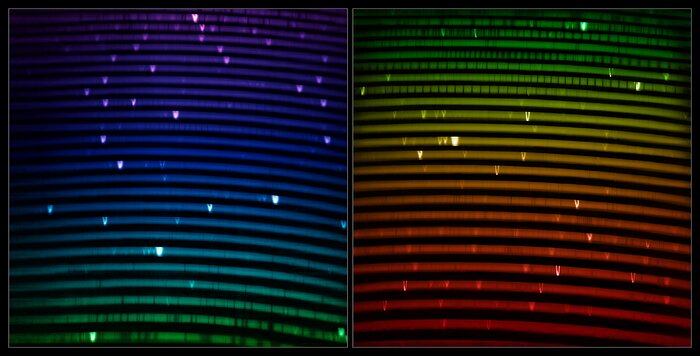IGRINS-2 First-Light spectrum
This mosaic shows the two IGRINS-2 spectra of NGC 7027, nicknamed the Jewel Bug Nebula, captured by the Gemini North telescope, one half of the International Gemini Observatory operated by NSF’s NOIRLab. NGC 7027 is one of the visually brightest planetary nebulae, and its resplendent rosette — made of layers of gas ejected during the dying breaths of its central star — makes for an exciting first light target whose spectrum illustrates the power of Gemini North’s new instrument. The two IGRINS-2 spectra shown here, which were produced in the same single observation, measure light from around 1.49 µm to around 2.46 µm. The bright lines in the rainbow are like the fingerprints of the gasses present in the nebula.
Notice how the emission lines have a V-shape. This is due to NGC 7027’s expanding gas bubble, with some gas moving towards the observer and some gas moving away along the observer's line of sight. Some lines appear sharp due to very dense layers of hydrogen which light can't penetrate much, while some appear fuzzy due to the less dense hydrogen layers.
Credit:International Gemini Observatory/NOIRLab/NSF/AURA
Image Processing: M. Zamani (NSF NOIRLab)
About the Image
| Id: | noirlab2331a |
| Type: | Collage |
| Release date: | Nov. 13, 2023, 9 a.m. |
| Related releases: | noirlab2331 |
| Size: | 4217 x 2148 px |
